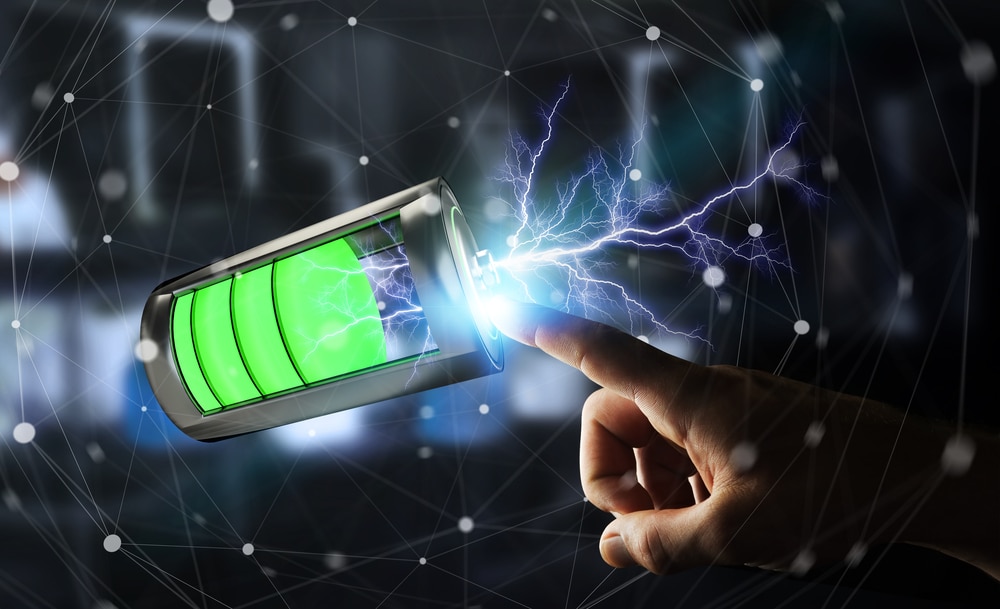Revolutionary 5: Smartphone Battery Tech’s Promising Future
Related Articles: Revolutionary 5: Smartphone Battery Tech’s Promising Future
- The Revolutionary 5 Ways The Internet Of Things Is Transforming Mobile Devices
- 5 Revolutionary Smartphone Features That Will Transform Mobile Technology
- The Astonishing 10-Year Evolution Of Smartphone Design: From Clunky To Sleek
- The 5 Game-Changing Ways AI Is Revolutionizing Mobile Apps
- 5G’s Explosive Potential: The Unstoppable Rise Of Mobile Connectivity
Introduction
With great pleasure, we will explore the intriguing topic related to Revolutionary 5: Smartphone Battery Tech’s Promising Future. Let’s weave interesting information and offer fresh perspectives to the readers.
Table of Content
Revolutionary 5: Smartphone Battery Tech’s Promising Future

The smartphone, a ubiquitous device in modern life, relies heavily on its battery for functionality. As our reliance on these devices grows, so does the demand for longer-lasting, faster-charging batteries. Fortunately, the field of smartphone battery technology is experiencing a surge of innovation, offering promising solutions to the ever-present battery anxiety.
This article explores the key emerging trends in smartphone battery technology, examining their potential impact on the user experience and the future of mobile devices.
Beyond Lithium-Ion: The Quest for New Chemistries
For decades, lithium-ion (Li-ion) batteries have reigned supreme in the smartphone industry. They offer a balance of energy density, power output, and cost-effectiveness. However, Li-ion batteries have inherent limitations, including a finite lifespan, safety concerns, and a relatively slow charging rate. The quest for improved battery performance has led researchers to explore alternative chemistries, seeking to overcome the shortcomings of Li-ion technology.
1. Solid-State Batteries: A Game Changer in the Making
Solid-state batteries, utilizing solid electrolytes instead of liquid ones, offer significant advantages over Li-ion batteries. These advantages include:
- Enhanced Safety: Solid electrolytes are less flammable than liquid electrolytes, reducing the risk of fires and explosions.
- Increased Energy Density: Solid-state batteries can pack more energy into the same space, leading to longer battery life.
- Faster Charging: Solid-state batteries can charge faster than Li-ion batteries, reducing the time spent tethered to an outlet.
- Longer Lifespan: Solid-state batteries are less susceptible to degradation over time, extending their lifespan.
While solid-state batteries hold immense promise, they are still in their early stages of development and face several challenges:
- Cost: Manufacturing solid-state batteries is currently more expensive than Li-ion batteries.
- Scalability: Mass production of solid-state batteries is still a significant hurdle.
- Performance: Solid-state batteries may not yet match the power output of Li-ion batteries in some applications.

Despite these challenges, ongoing research and development efforts are rapidly advancing solid-state battery technology. Companies like Toyota, Dyson, and QuantumScape are investing heavily in this field, aiming to bring solid-state batteries to market in the coming years.
2. Lithium-Sulfur Batteries: High Energy Density with Lower Cost
Lithium-sulfur (Li-S) batteries offer another promising alternative to Li-ion technology. They boast a significantly higher theoretical energy density than Li-ion batteries, potentially leading to devices with much longer battery life. Additionally, Li-S batteries utilize sulfur, a readily available and inexpensive material, making them a cost-effective alternative.
However, Li-S batteries face their own set of challenges:
- Short Lifespan: Li-S batteries tend to degrade faster than Li-ion batteries, leading to a shorter lifespan.
- Slow Charging: Li-S batteries can take longer to charge compared to Li-ion batteries.
- Safety Concerns: The use of sulfur poses potential safety concerns, requiring careful design and manufacturing processes.

Research is ongoing to address these challenges, focusing on improving the stability and lifespan of Li-S batteries. As these issues are resolved, Li-S batteries could become a viable alternative for high-energy applications, potentially finding their way into smartphones in the future.
3. Lithium-Air Batteries: The Holy Grail of Energy Density
Lithium-air (Li-Air) batteries are considered the "holy grail" of battery technology, offering the highest theoretical energy density of any known battery chemistry. This potential for significantly longer battery life has generated immense excitement in the research community.
However, Li-Air batteries are still in the early stages of development and face significant challenges:
- Limited Cycle Life: Li-Air batteries have a limited number of charge-discharge cycles before degradation.
- Low Power Output: Li-Air batteries currently exhibit low power output, limiting their practical applications.
- Complex Manufacturing: Li-Air batteries are challenging to manufacture, requiring sophisticated processes.
While Li-Air batteries hold tremendous potential, overcoming these challenges will require significant advancements in materials science and engineering. They are unlikely to find widespread application in smartphones in the near future.
Beyond Chemistry: Optimizing Battery Performance
While new battery chemistries hold immense promise, researchers are also exploring innovative ways to optimize the performance of existing Li-ion batteries.
1. Fast Charging Technologies
Fast charging technologies are becoming increasingly common in smartphones, reducing the time it takes to recharge a depleted battery. This is achieved through:
- Higher Voltage Charging: By increasing the voltage supplied to the battery, more power can be transferred in a shorter time.
- Optimized Charging Algorithms: Advanced algorithms can intelligently manage the charging process, ensuring optimal power delivery and minimizing heat generation.
Companies like Qualcomm and Oppo have developed proprietary fast charging technologies, enabling phones to charge up to 50% in just a few minutes.
2. Wireless Charging: A Convenient Alternative
Wireless charging eliminates the need for cables, offering a more convenient and clutter-free charging experience.
- Qi Standard: The Qi standard has become the industry standard for wireless charging, enabling devices from different manufacturers to charge using the same wireless charging pad.
- Reverse Wireless Charging: Some smartphones now offer reverse wireless charging capabilities, allowing them to act as charging pads for other devices like wireless earbuds or smartwatches.
3. Battery Management Systems (BMS): Intelligent Power Management
Battery management systems (BMS) play a crucial role in optimizing battery performance and extending its lifespan.
- Real-time Monitoring: BMS constantly monitor battery parameters like voltage, current, and temperature to ensure safe and efficient operation.
- Adaptive Charging: BMS can adjust charging parameters based on battery temperature and state of charge, maximizing battery life and minimizing degradation.
- Power Optimization: BMS can optimize power consumption by managing the power allocation to different components of the device, extending battery life.
4. AI-Powered Battery Optimization
Artificial intelligence (AI) is being integrated into battery management systems, enabling more intelligent power management.
- Predictive Analytics: AI algorithms can analyze user behavior and device usage patterns to predict battery consumption and optimize power settings accordingly.
- Dynamic Power Allocation: AI can dynamically adjust power allocation to different components of the device based on real-time needs, maximizing battery life.
- Adaptive Charging: AI can learn the optimal charging profile for a specific battery, maximizing its lifespan and performance.
The Future of Smartphone Battery Technology: A Balancing Act
The future of smartphone battery technology is a balancing act between developing new chemistries with higher energy density and optimizing the performance of existing technologies. While solid-state, Li-S, and Li-Air batteries hold immense promise for the future, they face significant challenges in terms of cost, scalability, and performance.
In the near term, we can expect to see continued advancements in fast charging, wireless charging, and battery management systems. AI-powered battery optimization is also poised to play a significant role in extending battery life and enhancing user experience.
Ultimately, the ideal smartphone battery technology will offer a combination of high energy density, fast charging, long lifespan, and cost-effectiveness. As research and development continue to advance, we can anticipate exciting innovations that will reshape the landscape of smartphone battery technology and provide users with even more power and freedom.
Conclusion
The pursuit of longer-lasting, faster-charging batteries is driving innovation in the field of smartphone battery technology. While new chemistries like solid-state, Li-S, and Li-Air batteries hold immense promise for the future, optimizing existing Li-ion batteries through fast charging, wireless charging, and intelligent battery management systems will continue to play a crucial role in enhancing user experience.
The future of smartphone battery technology is a dynamic landscape, with exciting advancements on the horizon. As researchers and engineers continue to push the boundaries of innovation, we can expect to see a future where battery anxiety is a thing of the past, and our smartphones can keep pace with our ever-demanding lifestyles.
Closure
Thus, we hope this article has provided valuable insights into Revolutionary 5: Smartphone Battery Tech’s Promising Future. We hope you find this article informative and beneficial. See you in our next article!
google.com




